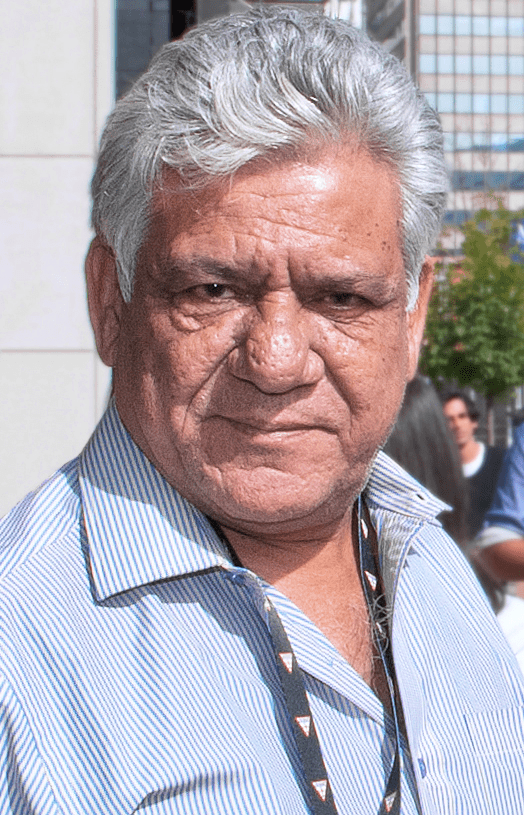The Most Popular Symbol, Ranked
Voting rules: Choose the symbol you think is the most popular!

Updated on May 3, 2024 06:51
In a world flooded with symbols, each holding its own meaning and significance, it becomes crucial to identify which ones resonate most with people. By tallying votes from diverse demographics, we can pinpoint which symbols have the deepest impact across cultures and communities. This not only satisfies human curiosity but also aids in understanding global trends.
Engaging in this voting process empowers you to contribute to a collective voice, helping shape a snapshot of what symbols currently stir the public interest and sentiment. Your participation ensures that the outcome reflects a wide range of perspectives, offering a clearer insight into which symbols capture the heart of society today.
What Is the Most Popular Symbol?
-
199votesKwamikagami · CC BY-SA 4.0The cross is one of the most widely recognized symbols worldwide, representing Christianity and its belief in Jesus' crucifixion and resurrection. It is also used as a symbol of sacrifice, redemption, and faith.The cross is a geometric symbol representing intersection or meeting point, consisting of two intersecting lines perpendicular to each other. It is commonly associated with Christianity and is a widely recognized symbol of the Christian faith.
- Shape: Two intersecting lines perpendicular to each other
- Religious Significance: Symbol of Christianity
- Usage: Religious symbol, used in churches and Christian ceremonies
- Meaning: Represents sacrifice, salvation, and the crucifixion of Jesus Christ
- Variations: Different styles and designs based on cultural interpretations
-
232votesThe Star of David is a symbol of Judaism, representing the Jewish faith and the Jewish people. It is also sometimes used as a symbol of Israel, which has a significant Jewish population.The Star of David is a widely recognized symbol that consists of two overlapping equilateral triangles. It is also known as the Shield of David or the Magen David. The symbol is primarily associated with Judaism and the Jewish community.
- Shape: Two overlapping equilateral triangles
- Symbolism: Primarily associated with Judaism and Jewish identity
- Meaning: Unity of opposites and the connection between God and humanity
- Usage: Widely used in Jewish religious and cultural contexts
- Flag: Present on the flag of Israel
-
321votesThe crescent moon and star is a symbol of Islam, representing the Muslim faith and its belief in Allah. It is also used as a symbol of the Ottoman Empire and is featured on the flags of several Muslim countries.The Crescent Moon and Star is a well-known symbol that consists of a crescent moon shape merging with and enclosing a star. It is commonly associated with the religion of Islam.
- Religion: Islam
- Shape: Crescent moon merging with a star
- Usage: Symbol of Islam and Muslim identity
- Historical Significance: Used by multiple empires, including the Ottoman Empire
- Color Scheme: Various colors but often depicted in green
-
417votesThe Yin Yang is a symbol of Taoism and Chinese philosophy, representing the balance of opposing forces in nature and the universe. It is also used as a symbol of harmony, balance, and unity.The Yin Yang is a popular symbol that represents the concept of harmony and balance in Taoism. It consists of a circle divided into two halves, one white and one black, with a smaller circle of the opposite color in each section. The two halves are interconnected by a curved line, which signifies the dynamic interaction between complementary forces.
- Meaning: Harmony, balance, and the interdependence of opposing forces
- Colors: Black and white
- Shape: Circular
- Divisions: Two halves divided by a curved line
- Sub-circles: One smaller circle of the opposite color in each section
-
517votesThe heart is a symbol of love, compassion, and emotion. It is also used as a symbol of life and vitality, and is often associated with the concept of the soul.The Heart is a vital organ in the human body that is responsible for pumping oxygen-rich blood to every part of the body. It is located in the chest, between the lungs, and slightly tilted towards the left side. The heart is composed of cardiac muscles and has four chambers: two atria (upper chambers) and two ventricles (lower chambers).
- Size: Approximately the size of a clenched fist
- Weight: Around 250-350 grams in adults
- Beats per Minute (BPM): Average resting rate is 60-100 BPM
- Blood Vessels: Connected to a network of blood vessels, including arteries, veins, and capillaries
- Cardiac Output: Pumps about 5-6 liters of blood per minute
-
612votes
The Peace Sign
Gerald HoltomThe peace sign is a symbol of peace and anti-war movements, representing the hope for a world without violence and conflict. It is also used as a symbol of protest and social activism.The Peace Sign, also known as the peace symbol or the CND symbol, is a widely recognized symbol for peace and unity. It is represented by a circle with three vertical lines extending downwards from the center, creating a composite image resembling a combination of the semaphore signals for the letters 'N' and 'D', standing for Nuclear Disarmament. The peace sign has become a powerful symbol representing various movements and campaigns advocating for peace, anti-war sentiments, and global harmony.- Year Created: 1958
- Shape: Circular
- Lines: Three vertical lines
- Color: Usually black on a white background
- Symbolism: Nuclear Disarmament
-
711votesInowen · CC BY-SA 4.0The Ankh is a symbol of ancient Egyptian religion, representing life, fertility, and immortality. It is also used as a symbol of spiritual and physical health.The Ankh is an ancient Egyptian symbol that represents life and vitality. It consists of a looped cross with a handle at the top. The loop represents eternal life, while the cross symbolizes the union of life and death. The Ankh is often depicted as being held by gods and goddesses in ancient Egyptian art.
- Meaning: Symbolizes life and vitality
- Origin: Ancient Egypt
- Design: Looped cross with a handle at the top
- Symbolism: Represents the union of life and death
- Usage: Widely used in ancient Egyptian religion and art
-
84votesThe Om is a symbol of Hinduism and Buddhism, representing the sound of the universe and the ultimate reality. It is also used as a symbol of meditation, mindfulness, and spiritual awakening.The Om is a sacred symbol and mantra in Hinduism, representing the essence of the universe. It is often chanted as a form of meditation and is considered a powerful spiritual symbol.
- Meaning: Represents the sound of creation, the vibration of the universe, and the ultimate reality.
- Symbol: Consists of three curves, a semi-circle, and a dot, forming a distinct shape.
- Pronunciation: Chanted as 'Aum' or 'Ohm', with the 'A' and 'U' sounds merging into the 'O' sound.
- Religious Significance: Sacred symbol in Hinduism, Buddhism, and Jainism, representing various aspects of spirituality and cosmic power.
- Meditation: Chanting or visualizing the Om symbol is believed to have calming and centering effects on the mind and body.
-
97votesAhmadi · Public domainThe Swastika is a symbol with ancient origins, representing good luck, prosperity, and well-being in many cultures. However, it has been strongly associated with the Nazi regime and is now widely recognized as a symbol of hate and white supremacy.The Swastika is a symbol that consists of a cross with four arms bent at 90 degrees in a clockwise or counterclockwise direction, forming a pattern resembling a pinwheel. It has a long history and has been used as a religious and decorative symbol in various cultures around the world.
- Name: Swastika
- Origin: Unknown, with earliest known usage in the Indus Valley Civilization (3300–1300 BCE)
- Meaning: The word 'swastika' derives from the Sanskrit word 'svastika,' which means 'well-being' or 'good luck.' It has been associated with positive concepts, such as prosperity, eternal life, and the sun.
- Cultural Significance: The Swastika has been used by various cultures including the Hindu, Buddhist, Jain, and Native American cultures. It has also been found in ancient Greek and Roman designs.
- Controversy: The Swastika became strongly associated with Nazi Germany and Adolf Hitler's regime in the 20th century, causing it to be largely stigmatized in Western cultures.
-
104votes
The American Flag
Betsy RossThe American flag is a symbol of the United States of America, representing the country's history, values, and ideals. It is also used as a symbol of patriotism and national pride.The American Flag is the national flag of the United States of America. It consists of thirteen equal horizontal stripes of red (top and bottom) alternating with white, with a blue rectangle in the canton (referred to as the union) bearing fifty small, white, five-pointed stars arranged in nine offset horizontal rows of alternating five and four stars.- Design: Thirteen red and white alternating stripes with a blue canton featuring fifty white stars.
- Colors: Red, white, and blue.
- Stripes: Thirteen stripes, representing the thirteen original colonies.
- Stars: Fifty stars, representing the fifty states of the United States.
- Ratio: 10:19 (width to length)
Missing your favorite symbol?
Graphs
Discussion
Ranking factors for popular symbol
-
Historical significanceSymbols that have a long historical and cultural significance, particularly those that have been widely used and recognized for centuries.
-
Universal appealSymbols that are universally recognized and understood across different cultures and regions.
-
Social relevanceSymbols that have a strong social relevance and impact on people's lives, such as those related to religions, politics, and social movements.
-
Media exposureSymbols that have been heavily featured in various forms of media, such as movies, TV shows, and books.
-
Popularity among a particular groupSymbols that are particularly popular among a specific demographic group, such as young people, sports fans, or gamers.
-
Use in branding and marketingSymbols that are frequently used in branding and marketing, as they can have a significant impact on consumer behavior and attitudes.
About this ranking
This is a community-based ranking of the most popular symbol. We do our best to provide fair voting, but it is not intended to be exhaustive. So if you notice something or symbol is missing, feel free to help improve the ranking!
Statistics
- 2078 views
- 223 votes
- 10 ranked items
Voting Rules
A participant may cast an up or down vote for each symbol once every 24 hours. The rank of each symbol is then calculated from the weighted sum of all up and down votes.
More information on most popular symbol
Symbols have been a part of human communication since ancient times. They represent ideas, concepts, and objects that are not easily explained in words. From the earliest cave paintings to the modern-day logos of global corporations, symbols have played an important role in shaping our world.
But what makes a symbol popular? Is it its simplicity, its universality, or its ability to evoke strong emotions? The answer is likely a combination of all of these factors. Some symbols, like the heart or the peace sign, have become so ubiquitous that they are instantly recognizable across cultures and languages. Other symbols, like the swastika or the cross, have complex and controversial histories that have contributed to their popularity or infamy.
At StrawPoll, we have seen a wide range of symbols used in our polls and rankings. From emojis to national flags, each symbol tells a unique story and reflects the values and beliefs of the people who use them. So, what is the most popular symbol? That's up to you to decide – cast your vote and see where your favorite symbol ranks!
Explore other rankings
Check out some of the other recommended rankings on StrawPoll and make your voice heard.





